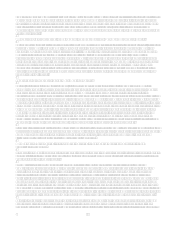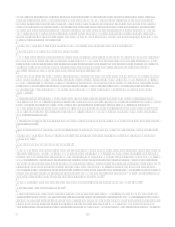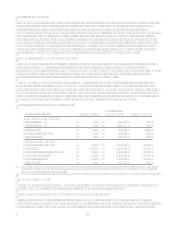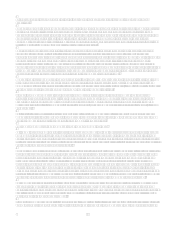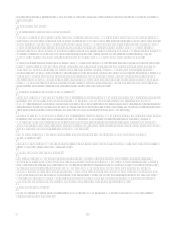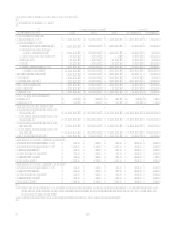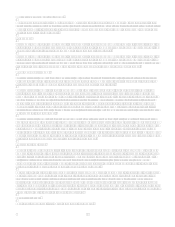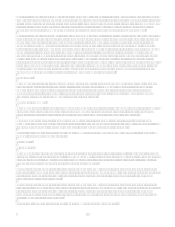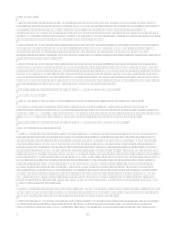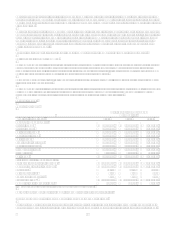Capital One 2006 Annual Report Download - page 49
Download and view the complete annual report
Please find page 49 of the 2006 Capital One annual report below. You can navigate through the pages in the report by either clicking on the pages listed below, or by using the keyword search tool below to find specific information within the annual report. 31
Recourse Exposure
The credit quality of the receivables transferred is supported by credit enhancements, which may be in various forms
including interest-only strips, subordinated interests in the pool of receivables, cash collateral accounts, cash reserve accounts
and accrued interest and fees on the investors share of the pool of receivables. Some of these credit enhancements are
retained by the seller and are referred to as retained residual interests. The Companys retained residual interests are generally
restricted or subordinated to investors interests and their value is subject to substantial credit, repayment and interest rate
risks on transferred assets if the off-balance sheet loans are not paid when due. Securitization investors and the trusts only
have recourse to the retained residual interests, not the Companys assets. See pages 104-107 in Item 8 Financial Statements
and Supplementary DataNotes to the Consolidated Financial StatementsNote 22 for quantitative information regarding
retained interests.
Collections and Amortization
Collections of interest and fees received on securitized receivables are used to pay interest to investors, servicing and other
fees, and are available to absorb the investors share of credit losses. For revolving securitizations, amounts collected in
excess of that needed to pay the above amounts are remitted, in general, to the Company. Under certain conditions, some of
the cash collected may be retained to ensure future payments to investors. For amortizing securitizations, amounts collected
in excess of the amount that is used to pay the above amounts are generally remitted to the Company, but may be paid to
investors in further reduction of their outstanding principal. See pages 104-107 in Item 8 Financial Statements and
Supplementary DataNotes to the Consolidated Financial StatementsNote 22 for quantitative information regarding
revenues, expenses and cash flows that arise from securitization transactions.
Securitization transactions may amortize earlier than scheduled due to certain early amortization triggers, which would
accelerate the need for funding. Additionally, early amortization would have a significant impact on the ability of the Bank
and Savings Bank to meet regulatory capital adequacy requirements as all off-balance sheet loans experiencing such early
amortization would be recorded on the balance sheet and accordingly would require incremental regulatory capital. As of
December 31, 2006, no early amortization events related to the Companys off-balance sheet securitizations have occurred.
The amounts of investor principal from off-balance sheet consumer loans as of December 31, 2006 that are expected to
amortize into the Companys consumer loans, or be otherwise paid over the periods indicated, are summarized in Table 10.
Of the Companys total managed loans, 34% and 43% were included in off-balance sheet securitizations for the years ended
December 31, 2006 and 2005, respectively.
Letters of Credit and Financial Guarantees
The Company issues letters of credit (both standby and commercial) and financial guarantees to meet the financing needs of
its customers. Standby letters of credit and financial guarantees written are conditional commitments issued by the Company
to guarantee the performance of a customer to a third party in a borrowing arrangement. Commercial letters of credit are
short-term commitments issued primarily to facilitate trade finance activities for customers and are generally collateralized by
the goods being shipped to the client. Collateral requirements are similar to those for funded transactions and are established
based on managements credit assessment of the customer. Management conducts regular reviews of all outstanding standby
letters of credit and commercial letters of credit, and the results of these reviews are considered in assessing the adequacy of
the Companys allowance for loan losses.
Loan and Line of Credit Commitments
For credit extended through credit cards, only drawn and outstanding loan balances are recorded on the Consolidated Balance
Sheet. The Company has unused available credit card lines and does not anticipate that all of its customers will exercise their
entire available line at any given point in time. The Company generally has the right to increase, reduce, cancel, alter or
amend the terms of these available lines of credit at any time.
The Company enters into commitments to extend credit other than credit card lines that are legally binding conditional
agreements having fixed expirations or termination dates and specified interest rates and purposes. These commitments
generally require customers to maintain certain credit standards. Collateral requirements and loan-to-value ratios are the same
as those for funded transactions and are established based on managements credit assessment of the customer. Commitments
may expire without being drawn upon. Therefore, the total commitment amount does not necessarily represent future
requirements.



